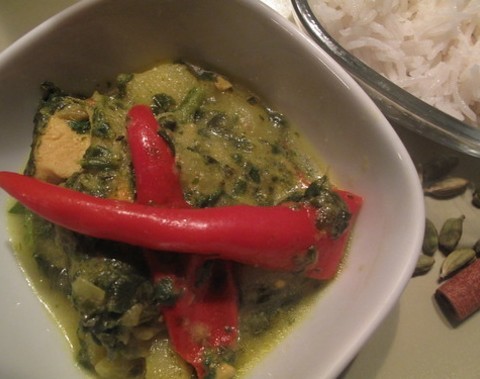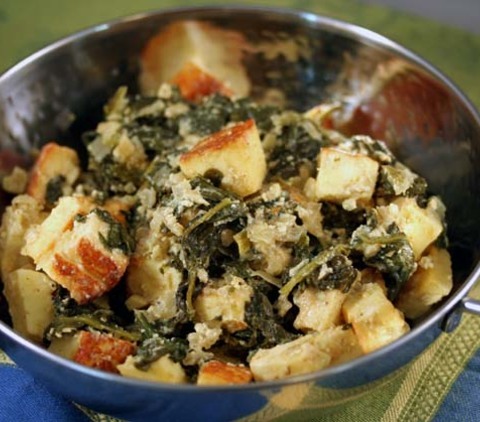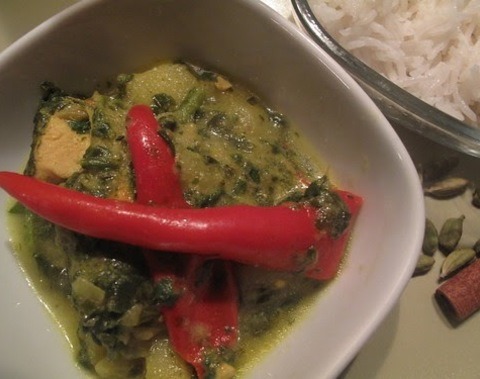#saag
Text

Vegan Garlic Mustard & Spinach Saag
#vegan#lunch#dinner#saag#garlic mustard#wild food#spinach#onion#garlic#gigner#cumin#jalapeño#lemon#vegan butter#black pepper#sea salt#rice bowl#rice#naan
30 notes
·
View notes
Text
Jab tak poray mulk ki aik aik zameen se nikla hua saag mere ghar mai pakk nahi jayega jab tak mama saag banati rahengi. 👍🏽
#sardiyan-saag#saag#just Pakistani things#desi tumblr#just desi things#desi larki#life of a desi girl#desi academia#pakistan#saag aesthetic#desi culture#pakistani aesthetics#riwaaj#karachi ki sardi#pakistani tumblr
26 notes
·
View notes
Text

Poi Saga Besara
Poi Saga Besara" is a traditional Odia dish featuring Malabar spinach (poi saga) cooked in a mustard-based sauce. To prepare, mustard seeds are ground with green chilies, garlic, and ginger to form a paste. The paste is then sautéed with Pancha Phutana (five-spice blend) for aroma before adding turmeric and chopped spinach. The dish is simmered until the spinach is tender, resulting in a flavorful and nutritious accompaniment to rice or roti, characteristic of Odia cuisine.
Ingredients:
250 grams Malabar spinach (poi saga), washed and chopped
2 tablespoons mustard seeds
2-3 green chilies, chopped
2-3 garlic cloves, chopped
1 tablespoon grated ginger
1 teaspoon turmeric powder
1 tablespoon mustard oil or any cooking oil of your choice
Salt to taste
Water as needed
1 teaspoon Pancha Phutana (five-spice blend) - typically includes equal parts of fenugreek seeds, nigella seeds, cumin seeds, black mustard seeds, and fennel seeds
Instructions:
Soak mustard seeds in water for about 30 minutes to soften them.
Drain the mustard seeds and grind them along with green chilies, garlic cloves, and grated ginger to make a smooth paste. You can add a little water if needed to facilitate grinding.
Heat mustard oil in a pan over medium heat. Once the oil is hot, add the Pancha Phutana (five-spice blend) and let it crackle for a few seconds.
Add Green Chilis if want extra spices in saag.
Add the ground mustard paste and sauté for 2-3 minutes until the raw smell of mustard disappears.
Add turmeric powder and stir well to combine with the mustard paste.
Add the chopped Malabar spinach (poi saga) to the pan and mix well with the mustard paste.
Season with salt according to your taste preferences.
Cover the pan and let the spinach cook for about 8-10 minutes, stirring occasionally. If the mixture becomes too dry, you can add a little water to adjust the consistency.
Once the Malabar spinach is cooked and tender, remove the pan from heat.
Serve Poi Saga Besara hot with steamed rice or roti.
3 notes
·
View notes
Text

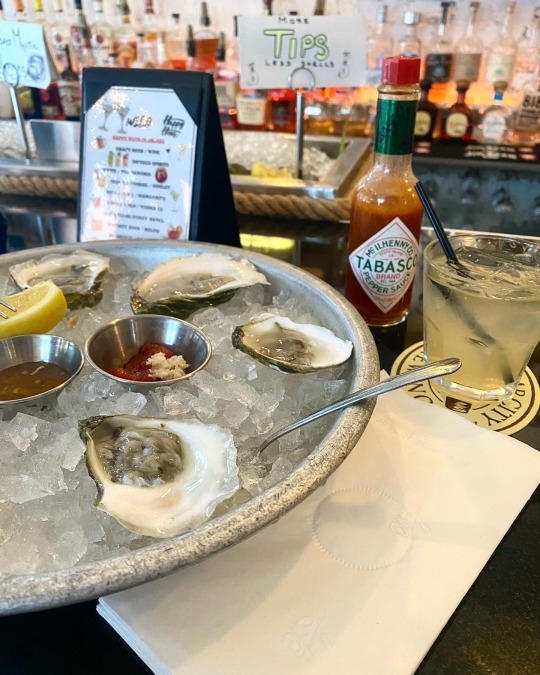
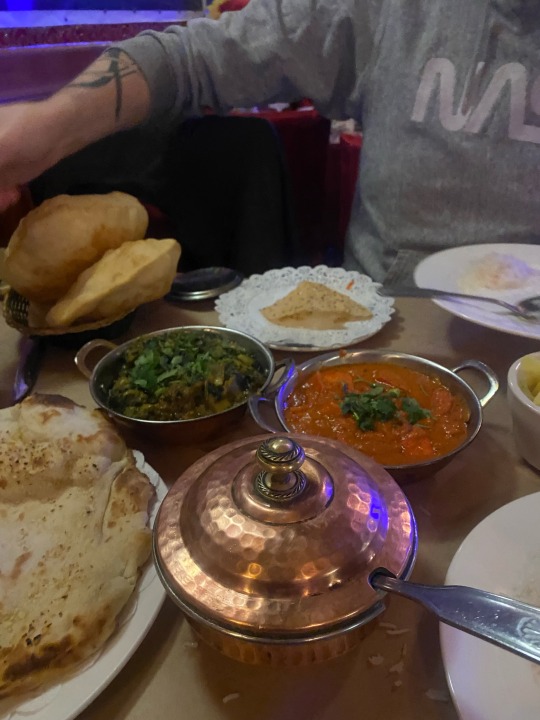
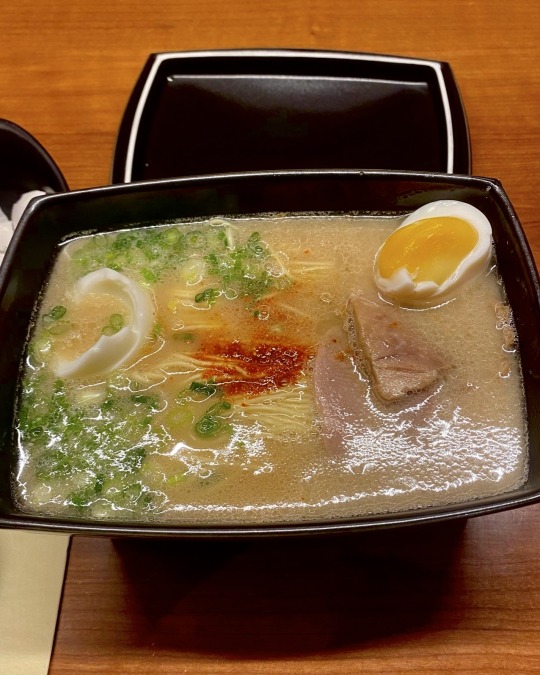
good food
7 notes
·
View notes
Text

1 note
·
View note
Text
Reviewing questions
Courvoisier sign is a palpable gallbladder on physical examination and is usually associated with biliary or pancreatic malignancy. Physicians should suspect malignancy in a patient with obstructive jaundice, weight loss, and a history of smoking.
PBC involves granulomatous destruction of the intrahepatic ducts within the portal triads, without affecting the extrahepatic ducts. It is an autoimmune disorder that mainly affects middle-aged women and can increase the risk of developing hepatocellular carcinoma.
Ursodeoxycholic acid has been shown to slow the progression of PBC and is the most important medical therapy. Multiple mechanisms have been proposed including protection of injured cholangiocytes against toxic effects of hydrophobic bile acids and inhibition of apoptosis of hepatocytes. However, the exact mechanism is unknown. Ursodeoxycholic acid does not improve pruritis, which is when cholestyramine or diphenhydramine can be prescribed. Liver biochemical testing will usually show improvement within 3 months of starting therapy. The majority of patients will see sustained improvement with this therapy. For those who do not show improvement, a liver transplant can be considered. Liver transplantation has shown very promising results in patients with end-stage PBC and should be offered after medical therapies have failed.
Geographic tongue, also known as benign migratory glossitis, is an inflammatory condition of the tongue secondary to an unknown etiology. Its key characteristic includes red patches with white borders on the dorsal surface of the tongue, which may mimic the design of a map. The lesions on the tongue are known to change location, shape, and pattern over time and may occur recurrently. The patchy areas are spots in which the local loss of the filiform papillae leads to the depapillation of the tongue. It may be seen more commonly in individuals with eczema, psoriasis, and reactive arthritis. Patients typically present asymptomatically, though common symptoms are usually mild and may include burning or increased sensitivity to certain food and drinks. The diagnosis is typically made clinically, and cultures or biopsies are necessary only in uncertain or persistent cases. Treatment is conservative and may include topical and systemic analgesics.
Alcoholic cirrhosis with signs of portal HTN (ascites and varices). Most patients with clinically apparent ascites will require diuretic therapy in addition to dietary sodium restriction. Diuretic therapy typically consists of treatment with spironolactone and furosemide in a ratio of 100:40 mg per day, with doses titrated upward as needed. Dietary sodium restriction and diuretic therapy are effective in approximately 90 percent of patients with cirrhosis and ascites. Concomitant treatment with both medications can mobilize moderate ascites more rapidly than if added sequentially. Also, using a combination of spironolactone and furosemide in a ratio of 100:40 mg usually maintains normokalemia. Spironolactone may be used alone only in severe alcoholic hepatitis with profound hypokalemia. Furosemide is still added once the potassium normalizes and potassium replacement is no longer needed. The response to diuretics should be carefully monitored on the basis of changes in body weight, laboratory tests, and clinical assessment. Patients on diuretics should be weighed daily; the rate of weight loss should not exceed 0.5 kg/day in the absence of edema and should not exceed 1 kg/day when edema is present. Serum potassium, blood urea nitrogen (BUN), and creatinine levels should be serially followed. In the setting of hyponatremia, diuretics should be stopped when the mean arterial pressure falls to 82 mmHg or below. Making sure that potassium is repleted may also help treat hyponatremia.
T5-T9 is where the sympathetic viscerosomatic reflex for the liver (and other components of the upper GI system) is located.
Bottom Line: Ascites has a stepwise treatment beginning with alcohol cessation, NSAID avoidance, and salt restriction. If this fails, then therapy with spironolactone and furosemide can be utilized followed by large volume paracentesis with albumin infusion. TIPS is the next step, and if this does not achieve a positive response, then liver transplant is the next choice.
The etiology of the ascites can be established through measurement of the serum-ascites albumin gradient. SAAG = serum albumin – ascites albumin. A SAAG greater than 1.1 indicates the ascitic fluid is a transudate and may be related to portal hypertension, which can be seen in splenic vein thrombosis, schistosomiasis, cirrhosis, hepatic metastases, right heart failure, constrictive pericarditis, or Budd-Chiari syndrome. An SAAG less than 1.1 indicates the fluid is an exudate and may be from protein leakage into the peritoneal cavity, which can be caused by nephrotic syndrome, TB, or peritoneal malignancies.
Fever, jaundice, right-upper-quadrant abdominal pain (the Charcot triad), altered mental status, and hypotension (the Reynolds' pentad) are characteristic symptoms of acute cholangitis. Stones in the common bile duct are a leading cause of obstructive jaundice. Endoscopic retrograde cholangiopancreatography (ERCP) is the most appropriate next step in managing the case of a pt who presents with acute cholangitis in the setting of biliary obstruction. Cholangitis is potentially life-threatening, and resuscitative measures, including administration of intravenous fluids and antibiotics, commonly targeted against Escherichia coli, Klebsiella species, and Enterobacteriaceae, should be done initially. After hemodynamic stability is achieved, ERCP is the treatment of choice for biliary decompression and stone extraction in patients with normal anatomy (unaltered by surgery, such as roux-en-y). In patients who have had roux-en-y gastric bypass or other major upper-gastrointestinal surgery, external biliary decompression, such as with percutaneous transhepatic cholangiogram, may need to be considered.
Sphenopalatine ganglion (SPG) release may help stimulate parasympathetic activity and improve secretions to the eyes and mouth. The SPG is associated with both sympathetic and parasympathetic activity in the head and face. The SPG is an autonomic-nervous-system ganglion that relays mixed cranial nerves innervating the upper airways. The SPG is situated in the pterygopalatine fossa, posterior to the posterior wall of the maxillary sinus and inferior to the junction of the body of the sphenoid, the greater wing and pterygoid process of the sphenoid, lateral to the perpendicular plate of the palatine bone, and medial to the pterygomaxillary fissure. It receives parasympathetic and sympathetic sensory afferents via fibers derived from the accessory branch of the facial nerve and the maxillary branch of the trigeminal nerve (V2). It distributes these fibers to the nasal mucosa, lacrimal glands, nasopharynx, and soft palate, including some of the upper-airway dilator muscles. Parasympathetic stimulation results in increased secretions (lacrimation, rhinorrhea, mucus production) (students should remember "rest and digest"), whereas sympathetic stimulation results in decreased secretions. Intraoral myofascial therapy of the SPG is widely used in osteopathic practice for the management of nasal obstruction and chronic rhinitis. The SPG release technique will help increase lacrimation and mucosal secretions. Most likely, this will also initially cause rhinorrhea but will most quickly lead to improvement of this patient's xerostomia and keratoconjunctivitis sicca. A rare syndrome called burning mouth syndrome is often treated with injections and osteopathic manipulative therapy to the sphenopalatine ganglia. With such treatment, patients with this condition generally report improvement in pain, dysgeusia, and xerostomia.
Ischemic colitis commonly presents with crampy abdominal pain and sudden rectal bleeding in the setting of colonic hypoperfusion from any source (dehydration, sepsis, cardiogenic shock), and these low-flow states can be exacerbated by underlying vascular disease.
A patient with a history of significant vascular disease presenting with sudden-onset abdominal cramping and hematochezia is concerning for the development of ischemic colitis. This is a common complication of colonic hypoperfusion, generally in the watershed areas of the colon (areas between the large arterial supply branches), which are most susceptible to variability in blood flow. When flow is insufficient to provide for the needs of cellular metabolism, ischemia develops. In this case (as commonly occurs in real life), the most likely trigger was working in the heat without adequate fluid resuscitation. This resulted in relative intestinal hypotension, likely exacerbated by underlying microvascular disease. In acute colonic ischemia, patients experience a sudden onset of abdominal cramping and tenderness over the affected areas of the abdomen. This is often associated with an urgent need to defecate. Rectal bleeding is mostly associated with left-sided colonic involvement and does not have to be present to make a diagnosis of acute ischemic colitis. Labs consistent with ischemic colitis include: lactic acidosis, fever, leukocytosis, or thrombocytopenia. If there is transmural involvement of the colon, colon perforation with localized or generalized peritonitis may be present, though this is less often the case. Ischemic colitis can be categorized as nonocclusive, which is typically transient, or occlusive. Nonocclusive ischemic colitis can occur in patients that are dehydrated or hypotensive, as in the setting of sepsis or cardiogenic shock. It usually affects the watershed areas of the colon, such as the splenic flexure and rectosigmoid junction. Occlusive ischemic colitis can result from embolic or thrombotic arterial occlusion, which may be from atrial fibrillation or iatrogenically from instrumentation.
Bottom Line: Gilbert syndrome is caused by reduced bilirubin conjugation resulting in episodic isolated unconjugated hyperbilirubinemia and often presents during adolescence.
COMBANK Insight: It is important to note for testing purposes that unconjugated bilirubin may not be reported in lab results. It is measured by subtracting the direct (or conjugated) bilirubin from the total bilirubin. It may also be referred to as indirect bilirubin.
2 notes
·
View notes
Photo

Steak, egg, saag, and tikka masala breakfast
3 notes
·
View notes
Text
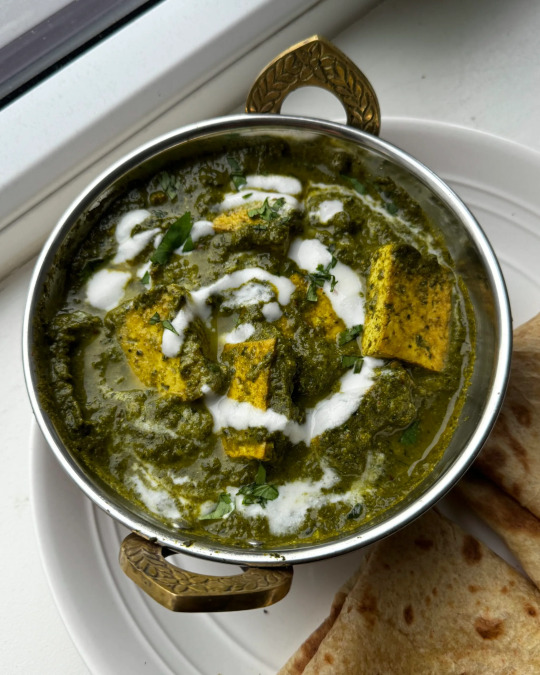
Saag Tofu (Vegan)
#vegan#appetizer#lunch#indian cuisine#paneer#saag#tofu#veganized#spinach#kale#cilantro#tomatoes#gigner#garlic#chili#coriander#fenugreek leaves#cashews#garam masala#cumin#lemon#sea salt#💚
15 notes
·
View notes
Text
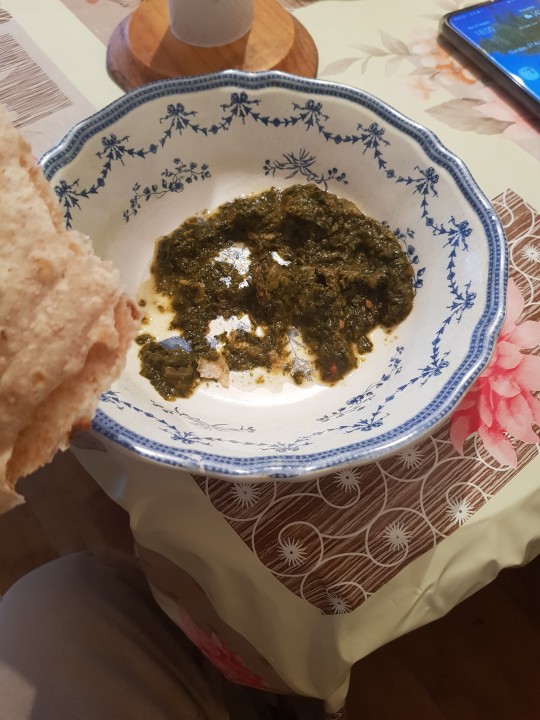
MMMMHHHHMMMM

1 note
·
View note
Text

1 note
·
View note
Text
Decompensated cirrhosis
Albumin, INR, and platelets tell you about decompensated cirrhosis
Get MELD score (tells you about prognosis) and Child Pugh score (estimates cirrhosis severity). MELD-Na is a new version of the MELD score that is better than the MELD and includes Na+; it's based on whether pt goes for dialysis twice weekly, Cr, bilirubin, INR, and sodium. MELD-NA tells you the severity of end stage liver disease. Pts who present with bleeding varices or ascites have decompensated cirrhosis and worse prognosis. So calculate the MELD score to educate the pt about his/her prognosis. Child-Pugh is based on total bilirubin, albumin, INR, Ascites, Encephalopathy.
Maddrey's discriminant function suggests which patients with alcoholic hepatitis have a poor prognosis and would benefit from steroids. It's based on PT and total bilirubin.
Cirrhosis is decompensated if the pt has varices or ascites.
Pts who present with bleeding have 50% mortality in 6 months.
All cirrhotics should get an EGD to evaluate for presence of varices.
In pts with ascites, calculate the SAAG score, which tells you whether the ascites is due to portal HTN.
Patients with SAAG greater than or equal to 1.1 gm/dL is considered as having high SAAG, indicating the presence of portal hypertension, while those with SAAG less than 1.1 gm/dL are considered as having low SAAG, indicating the absence of portal hypertension.
This is an example of a GI note for a pt who came in with decompensated cirrhosis:
Pt is a ----- w/ a PMH of hepatitis C, EtOH abuse, tobacco use, and IVDU who was admitted for acute decompensated liver cirrhosis w/ascites. 1. Acute decompensated liver cirrhosis w/ascites New diagnosis of liver cirrhosis likely 2/2 EtOH/hepatitis C. MELD score = 21, indicating 19.6% estimated 3-month mortality. Notable symptoms include scleral icterus and abdominal ascites. Low concern for SBP in the absence of fever, leukocytosis, or peritonitis. Initial labs include hemoglobin 14.5, platelet count 113, INR 1.6, PTT 29.2, total bilirubin 8.3, AST 125, ALT 58, albumin 2.7, total protein 9.3. No evidence of anemia. Parsaesophageal varices suggested on CT imaging require eventual EGD for further evaluation.
Ceruloplasmin and AFP normal. Iron studies and alpha-1 antitrypsin indicative of inflammation. Additional labs pending. 4L ascitic fluid removed during 9/7 paracentesis. PMN less than 250, which is not indicative of SBP. Ascites albumin pending for SAAG calculation. RUQ U/S demonstrates slowed portal vein flow, though no evidence of masses or thrombosis.
-acute hepatitis panel, ANA (anti-Nuclear Antibody), ASMA (Anti-Smooth Muscle Antibody), AMA (antimitochondrial), SPEP (Serum Protein Electrophoresis) pending
-less than 2 g daily sodium restriction
-ascites fluid analysis w/ cell count, albumin, and protein for calculation of SAAG
-ammonia level pending
-confirm vaccination status of HAV, HBV, influenza, Pneumovax, Prevnar
-avoid NSAIDs + counsel for alcohol cessation
-steroids for EtOH liver disease contraindicated due unclear hepatitis C status
-MRI abdomen for evaluation of portal vein thrombosis/masses
-100 mg spironolactone + 40mg lasix qd
2. EtOH use
Hx of significant alcohol use over the past 6 years w/o reported hospitalization. Reported taper from 3-4 glasses of vodka daily to several ounces daily; last drink 3 days ago. No withdrawal symptoms at this time. EtOH level less than 3 on admission. Suspected primary etiology of liver cirrhosis.
-management of potential withdrawal symptoms per primary team (CIWA protocol without ativan)
-cessation counseling strongly recommended in setting of liver cirrhosis
-potential options for medication assisted therapy include acamprosate, naltrexone, baclofen, or gabapentin
-nutrition therapy including multivitamin, thiamine, and folate
-recommend nutrition consult
3. Hepatitis C
Reported hx of hepatitis C not previously treated, unknown genotype. Last seen by GI prior to COVID.
-HCV viral load + genotype pending
-outpatient GI f/u for further management
4. Paraesophageal varices on CT
Confirm CT findings w/ EGD prior to considering initiation of beta-blocker. -outpatient EGD, unless concern for GI bleed or masses seen on abdominal MRI
5. Family hx of colon cancer
Sister diagnosed w/colon cancer. Pt has not had colonoscopy to date. -outpatient colonoscopy recommended
2 notes
·
View notes
Text
Punjabi-Style Chana Saag Recipe
Introduction:
Punjabi cuisine is renowned for its rich and vibrant flavors, and one dish that perfectly encapsulates this essence is Punjabi-style Chana Saag. This delightful recipe combines the goodness of tender chickpeas (chana) with the earthy flavors of spinach and aromatic spices. Whether you're a fan of Indian cuisine or simply looking to explore new flavors, this Chana Saag recipe is sure to be a hit at your dining table. In this blog post, we'll guide you through the step-by-step process of creating this mouthwatering dish.
Ingredients:
For the Chana:
1 medium onion, finely chopped
2 tomatoes, pureed
2 teaspoons ginger-garlic paste
1 teaspoon cumin seeds
1 teaspoon coriander powder
1/2 teaspoon turmeric powder
Red chilli powder, 1/2 tsp. (modify to taste)
1 teaspoon garam masala
Salt to taste
2 tablespoons oil
For the Saag:
1 green chili, finely chopped
Salt to taste
Water, for blanching
Instructions:
Prepare the Chickpeas:
a. Rinse and soak the dried chickpeas overnight. Drain and rinse again.
b. Cook the chickpeas in a pressure cooker or a pot until tender. Drain and set aside.
Prepare the Saag:
a. Boil water in a large pot and blanch the spinach for about 2 minutes.
b. Drain the spinach and immediately transfer it to a bowl of ice water to retain its vibrant green color.
c. Once cooled, blend the spinach to a smooth paste. Set aside.
Cook the Chana:
a. Heat oil in a pan.
b. Include the finely chopped onions and cook until browned.
c. Add ginger-garlic paste and sauté for a minute until fragrant.
d. Add tomato puree, turmeric powder, coriander powder, red chili powder, and salt. Cook the masala till the oil separates from it.
e. Add the cooked chickpeas and mix well with the masala. To allow the flavours to mingle, cook for a short while.
Combine Chana and Saag:
a. Add the blended spinach paste to the chickpea mixture and mix thoroughly.
b. Add garam masala and adjust the seasoning if needed.
c. Allow the dish to simmer for about 10-15 minutes on low heat, allowing the flavors to blend together.
Garnish and Serve:
a. In a separate small pan, heat a teaspoon of oil. After adding, sauté the chopped green chilies for one minute.
b. Pour the chili-infused oil over the Chana Saag before serving.
Serve your Punjabi-Style Chana Saag hot with naan, roti, or steamed rice.
Conclusion:
Punjabi-Style Chana Saag is a comforting and flavorful dish that brings together the wholesomeness of chickpeas and the freshness of spinach. This recipe is a true representation of Punjabi cuisine, known for its hearty and richly spiced dishes. Whether you're a seasoned cook or just beginning your culinary journey, this Chana Saag recipe is a must-try that will surely satisfy your cravings for authentic Indian flavors.
0 notes
